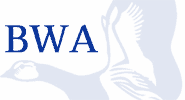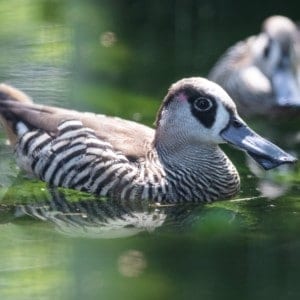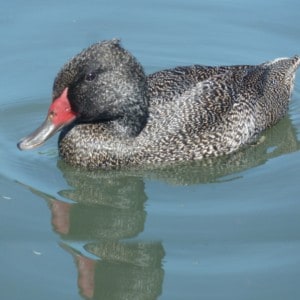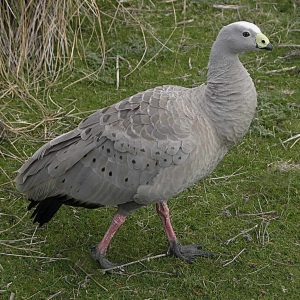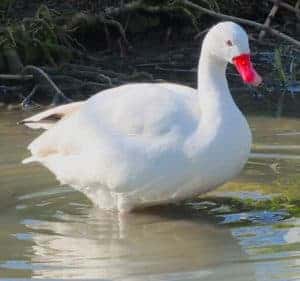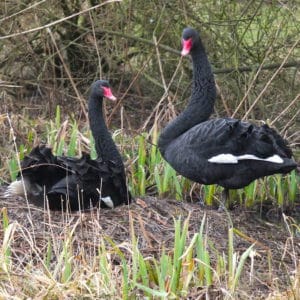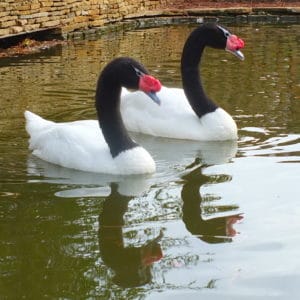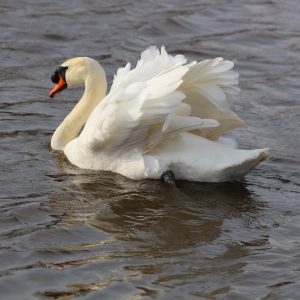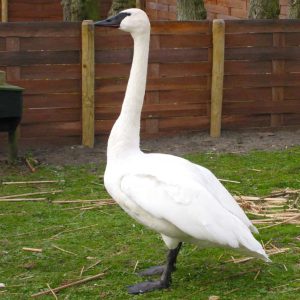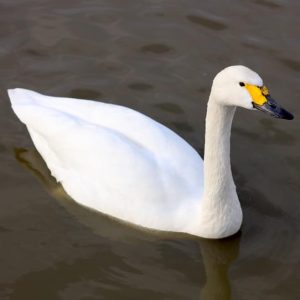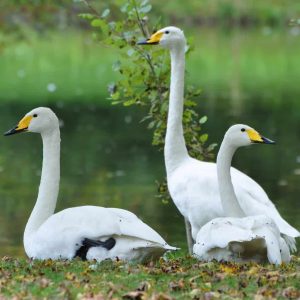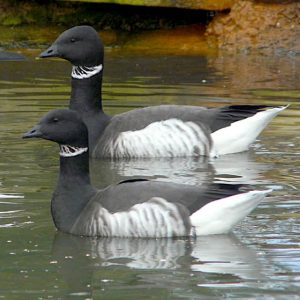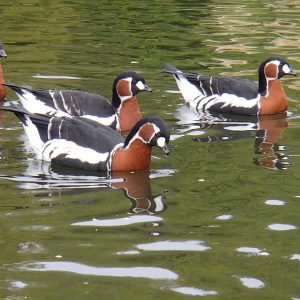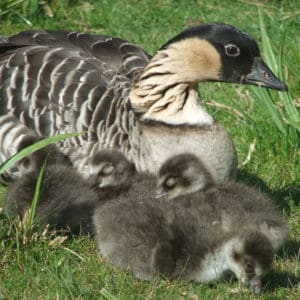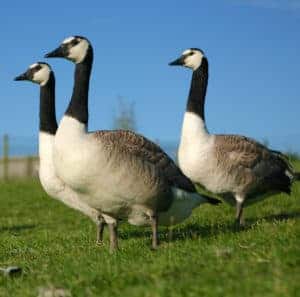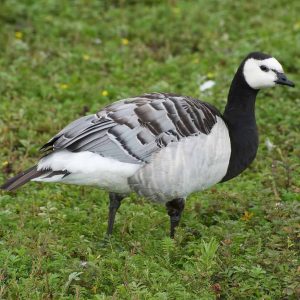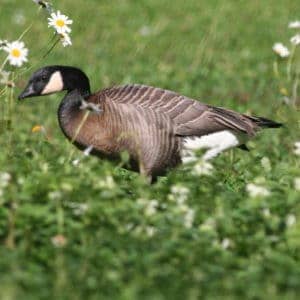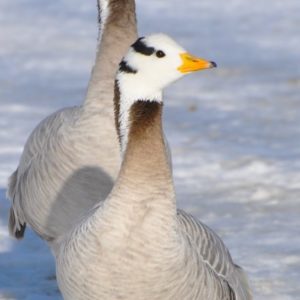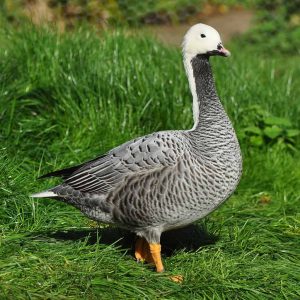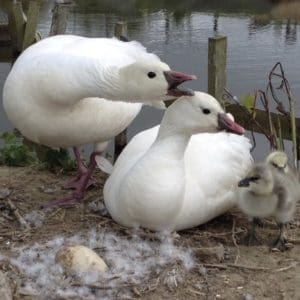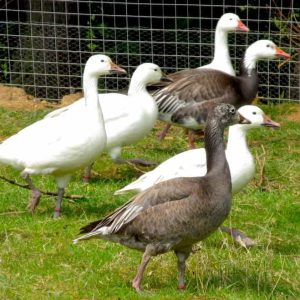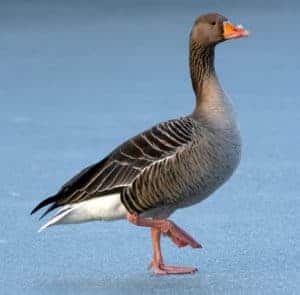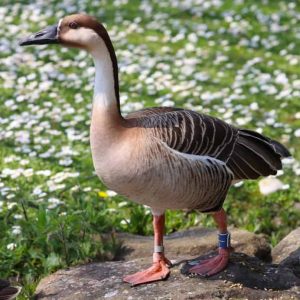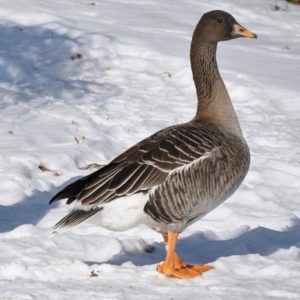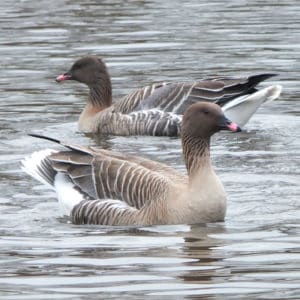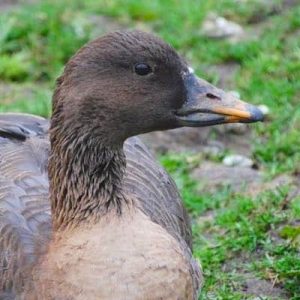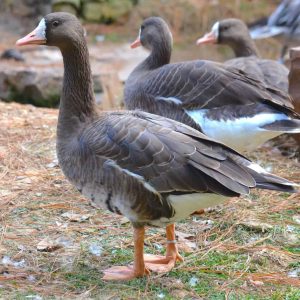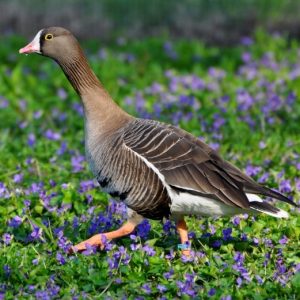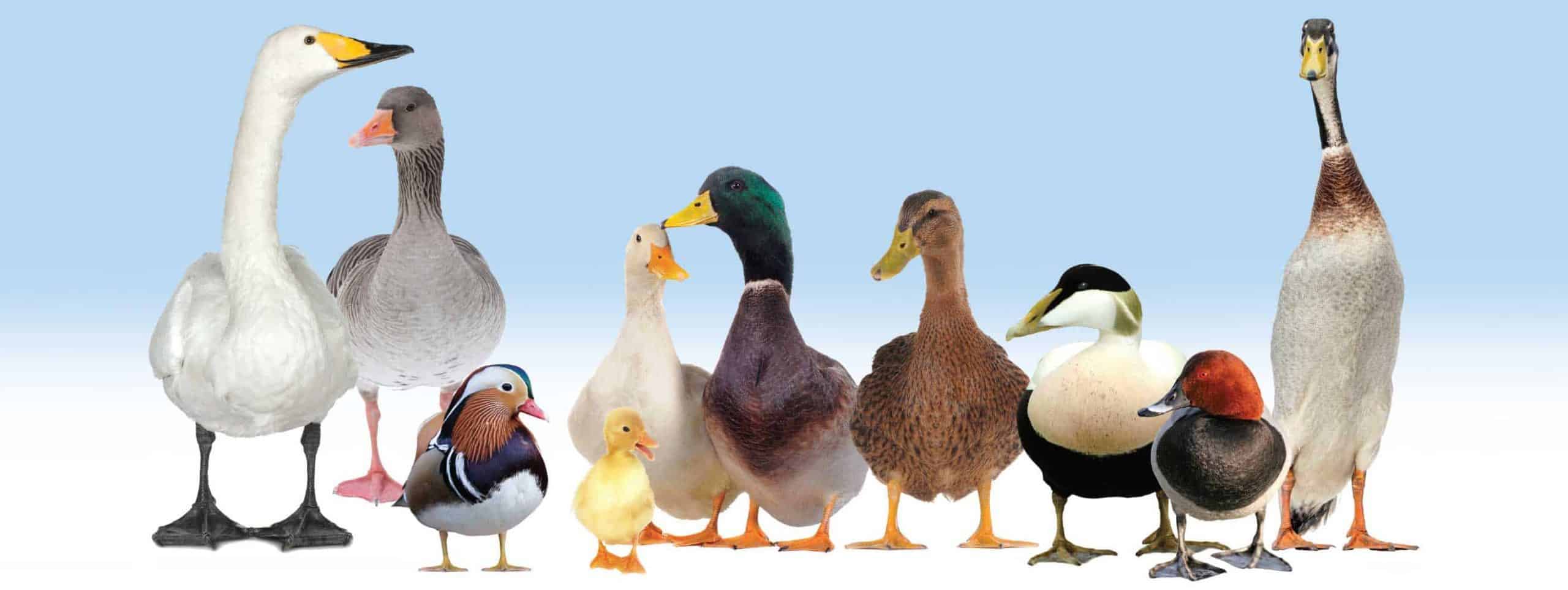These are the tribes that make up the subfamily Anserinae. Several odd waterfowl are in this subfamily and have unique challenges in aviculture.
Click the thumbnails for species accounts of the swans, geese and their allies.
True Swans
The largest and most majestic of waterfowl, the swan is graceful but also the most territorial and pugnacious. Cobs (males) tend to be more aggressive than their pens (females) and can be particularly troublesome during the breeding season. It is best to keep swans on larger water bodies, where they will spend most of their time.
Swans are vegetarian and can live for 30 years. Pair bonds are strong and swans usually mate for life. Mute, Black and Whooper Swans are prolific breeders but other species breed more sporadically. Bewick’s Swan is included here as a sub-species of the Tundra Swan.
True Geese
All true geese originate from the northern hemisphere. They are distinct from the ‘look alike’ sheldgeese of the southern hemisphere. They can be divided into two groups; pale-breasted geese and dark-breasted geese. The two groups make up a total of sixteen species from the popular Red-breasted Goose through to the less common Snow Goose.
In the wild, geese are gregarious, particularly so out of the breeding season, on migration and on their wintering grounds. In captivity a single pair of most species will thrive and breed but if space permits it is more natural to keep more than one pair of the same or different species together. Ornamental ducks may also be kept with ornamental geese, usually without difficulty although sheldgeese and some shelducks mix less successfully.
Geese need plenty of grazing space, so concentrate on ducks if your enclosure is small. Assuming extra feeding, in addition to grazing particularly in winter, a rough guide is ten pairs per acre. Geese bond for life. While the sexes look identical they can breed in captivity in the third year. For breeding and for general wellfare, all geese need a pond.
LIST OF THE Subfamily ANSERINAE
- Pink-eared Duck Malacorhynchus membranaceus
- Freckled Duck Stictonetta naevosa
- Cape Barren Goose Cereopsis novaehollandiae
- C. n. novaehollandiae
- C. n. grisea
- Coscoroba Swan Coscoroba coscoroba
- Black Swan Cygnus atratus
- Black-necked Swan Cygnus melancoryphus
- Mute Swan Cygnus olor
- Trumpeter Swan Cygnus buccinator
- Tundra Swan Cygnus columbianus
- C. c. columbianus
- C. c. bewickii
- Whooper Swan Cygnus cygnus
- Brant Goose Branta bernicla
- Black-bellied B. b. nigricans
- Dark-bellied B. b. bernicla
- Pale-bellied B. b. hrota
- B. b. orientalis
- Red-breasted Goose Branta ruficollis
- Nene Goose Branta sandvicensis
- Canada Goose Branta canadensis
- Dusky B. c. occidentalis
- Vancouver B. c. fulva
- Giant B.c. maxima
- Lesser B. c. parvipes
- Moffit’s B. c. moffitti
- Hudson Bay B. c. interior
- Atlantic B. c. canadensis
- Barnacle Goose Branta leucopsis
- Cackling Goose Branta hutchinsii
- Aleutian B. h. leucopareia
- B. h. minima
- Taverner’s B. h. taverneri
- Richardson’s B. h.hutchinsii
- Bar-headed Goose Anser indicus
- Emperor Goose Anser canagicus
- Ross’s Goose Anser rossii
- Snow Goose Anser caerulescens
- A. c. caerulescens
- A. c. atlanticus
- Greylag Goose Anser anser
- Western A. a. anser
- Eastern A. a. rubrirostris
- Swan Goose Anser cygnoid
- Taiga Bean Goose Anser fabalis
- A. f. fabalis
- A. f. johanseni
- A. f. middendorffii
- Pink-footed Goose Anser brachyrhynchus
- Tundra Bean Goose Anser serrirostris
- A. f. rossicus
- A. f. serrirostris
- Greater White-fronted Goose Anser albifrons
- A. a. flavirostris
- A. a. albifrons
- A. a. elgasi
- A. a. gambelli
- A. a. sponsa
- Lesser White-fronted Goose Anser erythropus
